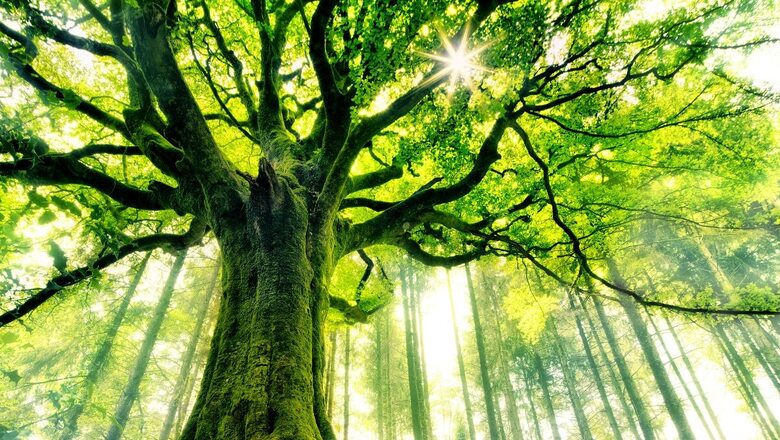
views
News18 Network, India’s largest news network, has launched ‘Project One Tree’, a movement aiming to mobilize every Indian to plant a tree as a measure against climate change. This marquee movement seeks to raise awareness about environmental conservation and foster collective action towards a greener, more sustainable future.
Project One Tree, a movement to restore our planet’s green cover and ensure a sustainable future for all. Together, let’s fight climate change and sow the seed for a healthier world. Join News18 Network and let each one of us plant one and remember to nurture nature.… pic.twitter.com/AOoE3iL6hO— News18 (@CNNnews18) July 8, 2024
From purifying the air we breathe to providing shelter and food for countless species, trees are the unsung heroes of our planet. As we go about our daily lives, it is easy to overlook the many benefits trees provide us with. However, these majestic creatures are more than just aesthetically pleasing; they play a crucial role in sustaining life on Earth.
Let’s delve into the many ways trees benefit our environment and lives:
- Trees help clean the air by absorbing carbon dioxide. Forests are great at storing carbon, which helps fight climate change.
- Trees are home to many animals and plants, so they help keep nature diverse. By planting different types of trees, we can save endangered species and keep ecosystems healthy.
- Forests support biodiversity by providing habitats for numerous organisms. By planting a variety of tree species, we can preserve endangered species and maintain ecosystem balance.
- Trees prevent soil erosion and improve soil structure. Their roots bind the soil, and their leaves and organic matter enrich it with essential nutrients.
- Forests act as natural water filters, improving water quality by trapping dirt, excess nutrients and pollutants.
- Trees regulate the water cycle, influencing water flow and maintaining groundwater levels. Forests provide approximately 75% of the world’s freshwater.
- Trees regulate local and regional climates by providing shade and releasing water vapour into the air, cooling the environment.
- Trees absorb pollutants and release oxygen, improving air quality and reducing respiratory illnesses.
- Trees reduce the risk of natural disasters like landslides, mudslides and floods by stabilising soil and absorbing excess rainwater.
- Forests provide spaces for recreation, education and research, promoting environmental stewardship and community involvement.
- Trees provide valuable resources like wood, fuel and paper. They are used in construction, furniture and household items.
- Trees reduce energy costs and increase property value. They save up to 30% on air conditioning and 20-50 per cent on heating. Well-maintained landscapes increase property value by up to 20 per cent.
Joe Fargione, an ecologist with The Nature Conservancy told ScienceNews: “[Trees] have lots of benefits for people. Not only do they store carbon, they help provide clean air, prevent soil erosion, shade and shelter homes to reduce energy costs and give people a sense of well-being.”
How Trees Help Mitigate Effects of Global Warming
According to Arborday.org, planting trees is a powerful way to fight climate change, whether around your home, in your community, or in national forests. Here’s how:
- Trees take in carbon dioxide (CO2) from the air through photosynthesis. This helps reduce the amount of this greenhouse gas in the atmosphere.
- Trees store the absorbed carbon in their trunks, branches, leaves, and roots. This process keeps carbon out of the atmosphere for long periods.
- During photosynthesis, trees release pure oxygen, improving air quality.
- Trees also absorb other pollutants and trap particulates, further cleaning the air.
Dominick DellaSala, chief scientist at Wild Heritage, told Time Magazine: “Whether it’s in Amazonia or the Tongass Rainforest in Alaska, those are all the lungs of our planet. The logging and development that takes place in those forests forever changes their ability to absorb and hang onto carbon.” DellaSala says that businesses can avoid being part of the problem by avoiding wood and fibre sourced from old-growth forests.

















Comments
0 comment